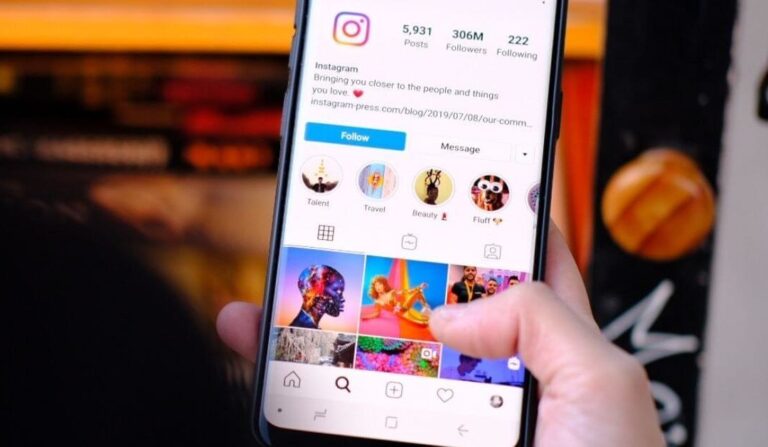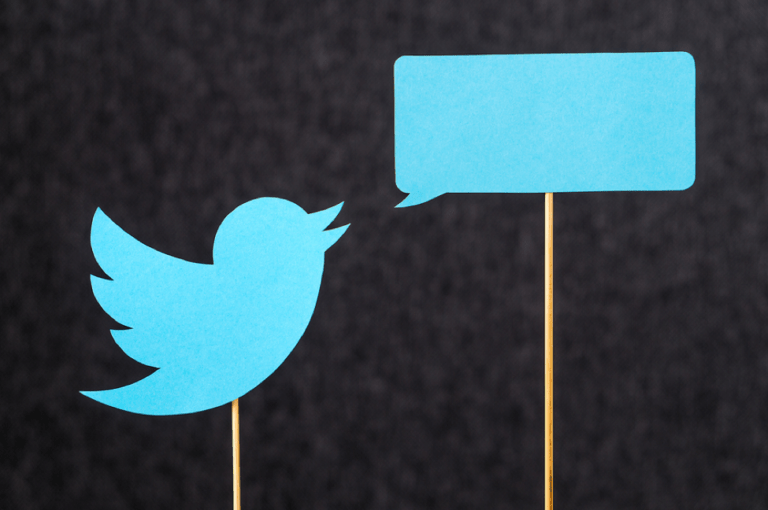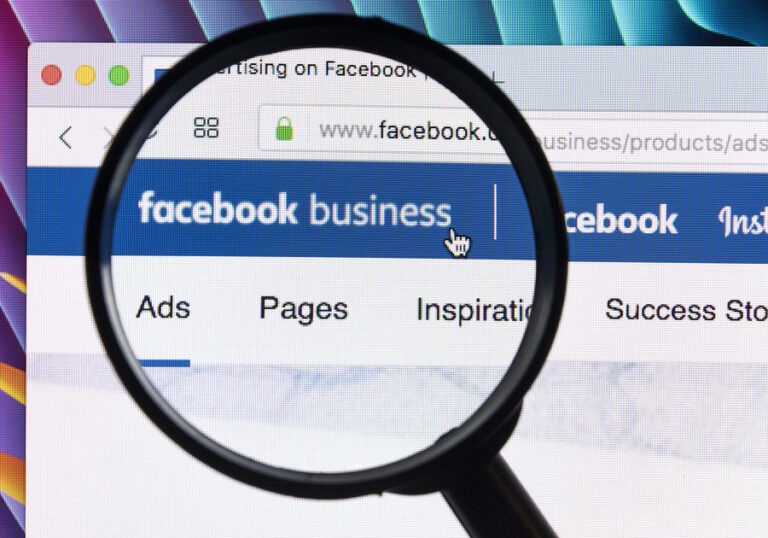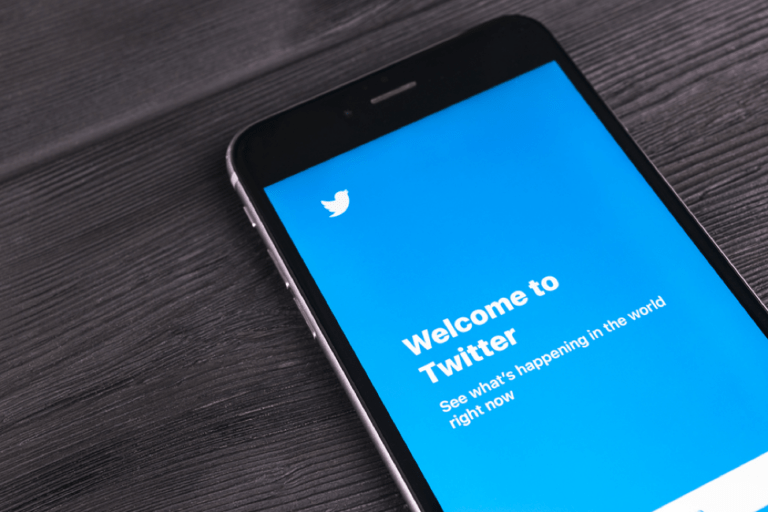How To Create And Maintain Brand Loyalty Like a Pro in 2025
I hope you enjoy this blog post. If you want Hello Bar to grow your leads, click here.
Author:
Andrei Gonzales
Published
July 29, 2024

You’ve invested the time and money to optimize your site and attract valuable, qualified, bottom of the funnel leads to your website with Hello Bar.
What’s next?
Just because someone downloads a resource, schedules a meeting, or makes a purchase doesn’t mean you’re off the hook. Now, nurturing, tracking, and converting visitors into loyal customers begins.
With new businesses popping up daily, you’re bound to face competition. And without plans to out-market and outsmart those other brands, there’s no doubt that at least some of your prospects and customers will leave you for the other guy. So, how can you keep your prospects interested and your customers loyal? We have nine foolproof tactics to help you build brand loyalty and create raving fans.
For example, some consumers might prefer McDonald’s over Burger King. Although these two food chains offer similar products, some consumers have developed a strong loyalty to McDonald’s and will continue to buy its products because they believe it is better.
What is Brand Loyalty?
In marketing, brand loyalty refers to consumers’ preference for a particular company’s products and services.
Consumers who exhibit brand loyalty perceive that a certain brand offers superior products and services compared to its competitors. This perception leads them to continually purchase products from that brand, regardless of how cheap or expensive they may be.
For example, some consumers might prefer McDonald’s over Burger King. Although these two food chains offer similar products, some consumers have developed a strong loyalty to McDonald’s and will continue to buy its products because they believe it is better.
Benefits of Building a Loyal Customer Base
Building a loyal customer base can significantly contribute to a company’s long-term success. Here’s why:
- Brand Advocacy: A consumer who is loyal to your brand will speak positively about your brand and recommend it to their family and friends. This referral and word-of-mouth marketing will position your brand as trustworthy to potential customers, who will be more inclined to purchase.
- Customer Retention: Brand loyalty reduces customer churn and improves customer retention. Brand loyal customers are less likely to jump ship, and this can help reduce marketing costs because retaining existing customers is often cheaper than acquiring new ones.
- Increased Customer Lifetime Value: Customers loyal to your brand make repeat purchases, and this increases your customer lifetime value over time.
- Competitive Edge: A loyal customer base gives you a competitive edge, a strong market position, and a reputation. Other competing businesses might use tricks to lure new customers, but brand loyalists will always stick with your company.
- Resilience to Market Fluctuations: One of the benefits of building a loyal customer base is that your prices will not affect your customers’ loyalty. If you ever have to increase your prices due to economic downturns or market fluctuations, most loyal customers will still value your products and continue to buy your products.
- Improved Customer Feedback: A customer who is loyal to your brand is likely to provide more honest feedback and constructive criticism. They’ll be open to suggesting ways in which you can refine your products and services because they genuinely want to see your brand thrive.
Strategies to Boost Your Brand Loyalty
To boost your brand loyalty, you must be intentional about providing good customer service and creating an environment where your customers always feel valued. Here are some strategies to implement to boost customer satisfaction and brand loyalty.
1. Pinpoint the Stickiness Factor
How in tune are you with your customer base? If you’re not sure who your radical buyer is, that’s the first place you should start in your brand loyalty journey.
Not only is a buyer persona vital for your branding and messaging, but it’s even more important when building a new product or offering a new service. Is it something your customers actually need or want? Or are you wasting your resources? If you’re sending your business roadmap in a direction that isn’t going to fit your target market needs, you’re almost certainly going to see higher customer churn and lower sales.
What is it that makes your long-term customers stick? Is it your customer service, your team members, or your product? The easiest way to gauge that stickiness factor is through net promoter score (NPS).
NPS is one of the most vital metrics for a business. Net Promoter Score is a worldwide standard for businesses to measure, understand, and improve customer experience. NPS is a simple way to get customer feedback on your brand and to understand how likely customers are to recommend your organization to friends, family, and colleagues.

Tools like Jotform Survey Maker, SurveyMonkey, AskNicely, and ZenDesk allow you to survey your customer base regularly to see what’s working and what isn’t. Analyzing your customer base – How is their experience? What changes would they like to see made? Will it help you create a better customer experience and build loyalty?
2. Step-Up Your Onboarding Process
First impressions matter, and the best way to make a great first impression on your customers is by giving them an unforgettable onboarding experience.
You can easily do this by personalizing the onboarding experience for each customer. Start with a welcome email that addresses each customer by name and let them know how much you look forward to working with them. Doing this makes your customers feel valued and appreciated and is the foundation for building brand loyalty.
While sending a welcome email is necessary, it doesn’t end there. You must also maintain consistent communication throughout the onboarding process. Keep your communication lines open and let customers know you’re always available for support.
3. Build a Brand Community
One of the best ways to boost brand loyalty is by making your customers feel like they’re a part of something bigger. Build a brand community where customers can interact with each other and your brand. This fosters a sense of belonging.
You can create an online forum where you offer exclusive content, access to events, and product promotions to your loyal customers. Social media platforms like Facebook groups, Reddit, or Telegram channels are good for online communities.
Apple is an example of a brand that uses communities to build brand loyalty. It provides an Apple support community where users can share tips, tricks, and experiences using Apple products.
4. Mine That Data
If you’re not already utilizing a CRM, your business is missing out on opportunities to build and grow relationships. Your CRM data is a wildly valuable resource you should leverage daily. It can offer deep insights into what your customers are doing online – which will help you stay on top of how their business is changing and their goals. Properly store your data in a centralized location (CRM) and update it regularly to enable you to offer help, advice, or even upsell easily.
Letting your CRM data go stale can harm your business as a whole. If you’re not regularly using a CRM to keep customer records current, you risk letting customer experience fall by the wayside. This increases customer churn, which is the opposite of building brand loyalty.
Keeping your customer data clean and actionable is a team effort. Everyone from marketing to sales to customer support has a role in creating a data goldmine.
- Establish Contact Status. Everyone on your team should know what the contact pipeline looks like. That way, the marketing team doesn’t accidentally message current customers, the sales team isn’t chasing after cold leads, and your support team can easily refer a former customer back to a salesperson. A typical contact pipeline looks like the image below.

- Encourage Good Note Taking: As a customer, there’s nothing worse than feeling like a number instead of a name. When your sales and customer service teams leave solid notes in your CRM, it’s much easier for everyone in your business to provide a personal experience for every contact in your database.
-
- So
, how do you promote note-taking excellence? Invest in a CRM that your team loves. Clean, simple, easy-to-use software is the best way to foster adoption across your entire team.
- Leverage Tags: Tags help you categorize your contacts based on their interests, actions, and more. Work with your team to establish set tags to add to your contacts. For instance, you can use tags to segment your contacts by the product or service they are interested in. Then, slice and dice your customer list to offer relevant offers and incentives. It’s an easy way to upsell and cross-sell your current customers, boosting brand loyalty.
- Utilize Lead Scoring: Lead scores are valuable information indicating how engaged your CRM contacts are. This is a super powerful metric configurable in many CRM software, meaning you can give more weight to specific contact actions or attributes. For example, you may find that contacts who fill out forms on your website are highly engaged and boost their lead score accordingly.
Analyze your lead scoring data to find the lead score sweet spot where your prospects are the most engaged and ready to buy. This will help you target more raving-fan customers and improve your conversion rates. You can also use lead scoring to find your most loyal customers, allowing you to target excellent candidates for referrals, case studies, and reviews.
5. Make Automation a Priority
Brand loyalty directly corresponds with responsiveness. If communication is slipping through the cracks, your customer relationships will suffer. When juggling multiple accounts and trying to stay afloat, you need a surefire process to keep things on track. That’s where automation comes in.
Marketing automation allows you to keep tabs on prospects and customers at every stage of the customer journey. Tags, lead scoring, and nurture campaigns will allow you to connect with contacts before, during, and after a sale with intelligent automation. You can be sure you’re sending the right message at the right time so your brand is at the top of your inbox and mind.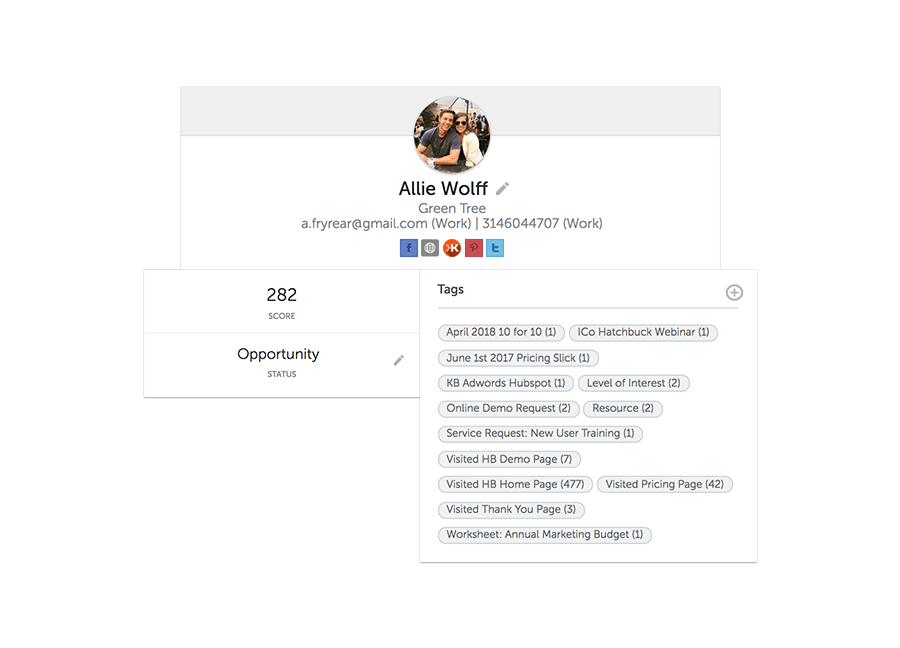
You can easily keep tabs on what visitors are doing on your website through automated tags and tag rules. Whether they’re visiting landing pages, filling out forms, or watching videos, marketing automation allows you to tag automatically and segment visitors based on their actions and interests without repetitive daily tasks.
Your contact lead score is created through those automations. Any time a tag is triggered, an assigned value is added to that lead score – so the more engaged your contacts are, the higher the lead score associated with their record.
Nurture campaigns come in many shapes and sizes: general nurture campaigns, hot prospect campaigns, customer nurture campaigns, win-back campaigns, and so on. Unlike old-school drip campaigns, the nurture campaigns we’re referring to comprise many steps beyond just email marketing. A well-executed nurture campaign will include emails, tasks, notes, tags, and contact record updates. A nurture campaign guides a contact down your sales funnel while keeping your sales and marketing teams in the loop.

Nurture campaigns are guaranteed to simplify your life, make your business run more smoothly, and ensure valuable leads and loyal customers don’t fall through the cracks.
6. Provide Best in Class Customer Service
Providing high-quality customer service is one of the best ways to drive customer loyalty. You must make your customers feel valued enough to become loyal to your brand. Here’s how:
- Provide Prompt Responses: To keep your customers happy, attend to their queries, questions, and problems promptly. With multiple customers breathing down your neck for an answer, this can be difficult to achieve via live chat alone.
However, you can use customer service tools like Zendesk and Intercom, which provide AI-powered chatbots that can attend to multiple customer inquiries simultaneously.
- Personalize Your Interactions: A great way to make customers feel valued is by making each interaction feel personal. Your customer service agents should always refer to customers by their first name.
If the customer has a complaint, empathize deeply before proffering a solution. You can also go one step further by reaching out to customers on special occasions like birthdays with personalized messages or gifts, such as print on demand items tailored to their preferences.
- Ask for Customer Feedback: Since your customers are at the receiving end of your services, they’re best positioned to tell you what works and what doesn’t.
Always ask for feedback about a customer’s experience with your brand. Give room for suggestions and complaints. And when you get the feedback, implement changes based on it. Here’s an example.
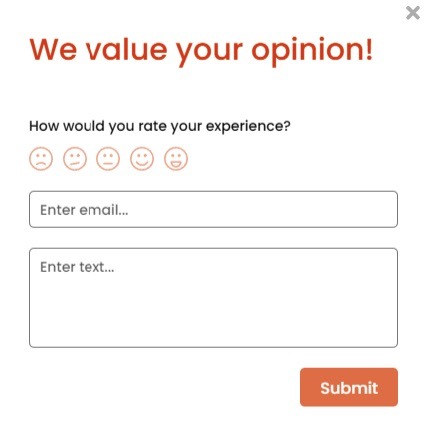
Image via Common Ninja
7. Create Reward Programs
Incentivize repeat purchases as a way of encouraging existing customers to remain loyal to your brand. A good way to encourage customer loyalty is by creating reward programs.
- Create a Points-Based Reward System: Here, customers can earn and redeem points when they purchase items from your brand. Your reward program can also offer bonuses, free products, discounts, or store credits as incentives.
- Offer Exclusive Access: Another good way to reward loyal customers is offering member-only discounts or exclusive access to selected products and services. Doing this will make your long-term customers feel valued, and encourage them to continue purchasing your products and services.
For example, Starbucks effectively uses reward programs to build brand loyalty. With the Starbucks reward program, customers earn one star for every dollar they spend. When they have at least 25 stars, they can redeem them for free drinks, baked goods, or Starbucks merchandise.
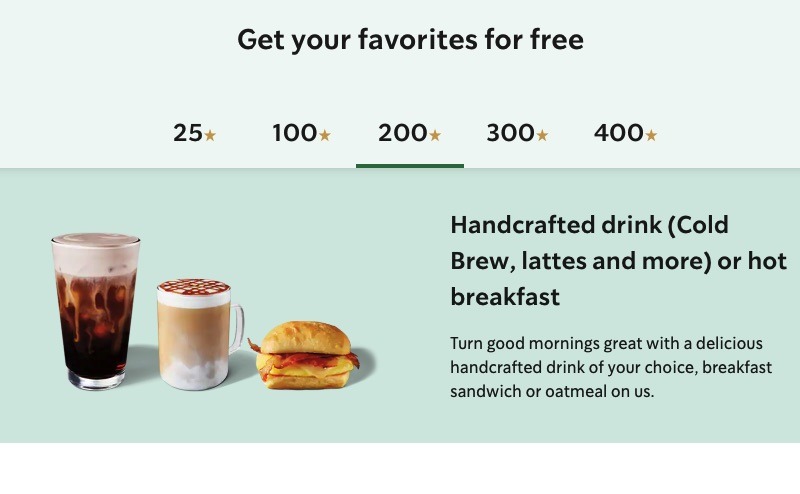
Image via Starbucks
8. Anticipate and Meet Customer Expectations
Another good way to boost brand loyalty is to anticipate customer needs and meet their expectations even before they ask.
Customers who make repeat purchases expect a certain level of quality in your products and services. As such, you must maintain consistent quality standards to keep them satisfied.
As you strive to understand what your customers expect from your brand, remember that customer needs can also change. Therefore, you must keep up with evolving customer preferences and market trends to maintain customer satisfaction.
A good way to do this is by keeping an eye on your competitors. Use competitor monitoring tools like Market Explorer and Social Tracker to help you observe competitors and change market trends.
Finally, use social listening tools like Brandwatch or Keyhole to monitor consumer sentiment about your brand. This will give you insights into changing customer preferences and help you identify areas that need improvement.
9. Work with Brand Ambassadors
An authentic brand ambassador who has a genuine brand affinity with your company can attract more customers who will remain loyal to your brand.
Your brand ambassador could be a celebrity, industry expert, or social media influencer who resonates with your brand ideals.
Brand ambassadors don’t just extend your brand reach; they also enhance your brand trust and credibility. Infact, according to a Matter Survey, 69% of consumers are more likely to trust product recommendations from influencers.
Therefore, if an influencer serves as your brand ambassador, they can influence purchase decisions and inspire their audience to become brand loyalists.
FAQs
Q1. How can you increase brand loyalty?
Some effective strategies to cultivate brand loyalty include:
- Discover what makes your customers fall in love with your brand and capitalize on it.
- Set up a personalized customer onboarding process.
- Utilize CRM data to get insights into your customers’ behaviors.
- Use marketing automation tools for lead scoring and lead nurturing.
- Provide exceptional customer service by personalizing interactions and providing prompt responses.
- Incentivize repeat purchases by creating reward programs to appreciate loyal customers.
- Anticipate and meet customer expectations by providing products and services of high-quality standards at all times.
Q2. What reduces brand loyalty?
Some of the factors that can negatively affect brand loyalty include:
- Poor customer service
- Inconsistent quality of products and services
- Failure to meet customer expectations
- Inability to adapt to changing customer preferences
Q3. What are the three stages of brand loyalty?
The three stages of brand loyalty include:
- Brand Recognition & Awareness: This involves catching the attention of a potential customer and building brand awareness.
- Brand Preference: This is when a customer starts to develop an interest or a liking for a particular brand.
- Brand Insistence: In this stage, customers develop an emotional connection to a specific brand and will likely choose it over other alternatives.
Q4. What is the best example of brand loyalty?
A good example of how customers can exhibit brand loyalty for a specific brand is when consumers prefer Coca-Cola over Pepsi. This is because they have developed a strong preference and emotional attachment to the Coca-Cola brand and will continue to purchase its products.
Q5. What is a brand loyalist?
A brand loyalist is a consumer who has a strong preference for one brand over other alternatives due to its perceived value.
Conclusion
Some of the most effective ways to build brand loyalty are providing excellent customer service and creating rewards programs.
A rewards program builds loyal customers by showing gratitude and motivating loyalty program members to keep returning to your brand.
Another great way to build high brand loyalty is to anticipate and cater to your customers’ needs. Brand loyalists associate your brand with high quality, so you cannot afford to compromise on quality. With these practices, you can build a loyal customer base.
Good luck!
Author Bio
Jonathan Herrick is co-founder, chief sales officer, chief marketing officer, and chief high-fiver of Hatchbuck, an all-in-one sales and marketing platform based in St. Louis. His extensive experience in digital marketing and sales strategies has been a driving factor in growing Hatchbuck’s sales by over 2,000 percent. A purpose-driven leader in all aspects, Jonathan has a passion for cultivating his team’s culture, spending time with his family and working to make a difference in the St. Louis community.

